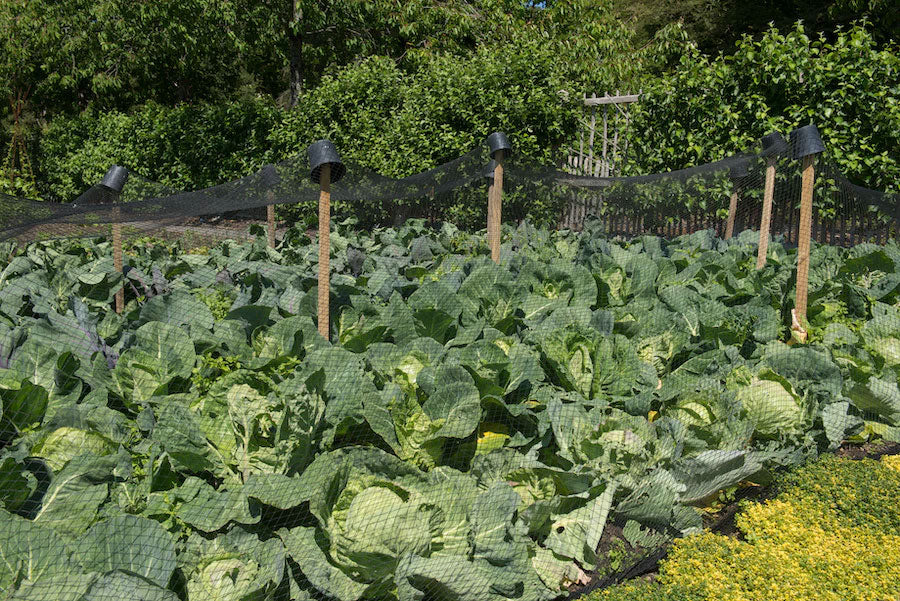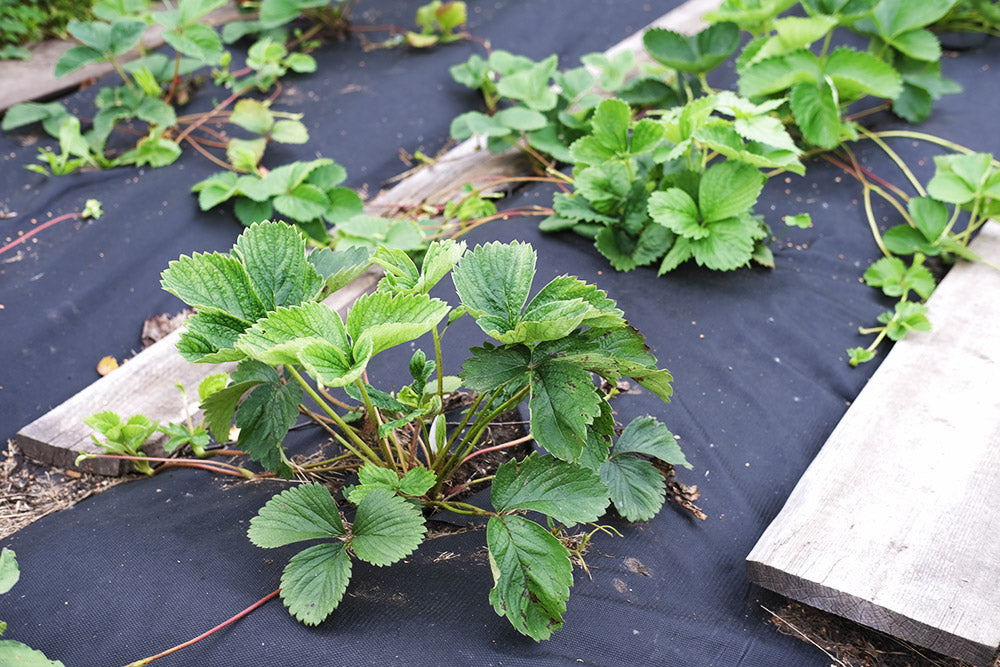How to Properly Plant Grass Seed
Are you a new homeowner wanting to grow a lawn? Or have you discovered some bare spots in your existing lawn and want to plant grass seeds to fill them? Wherever you're starting from, we can help! This comprehensive guide includes essential steps on how to grow grass and expert tips and strategies for transforming bare soil into a green sanctuary. Let's get started!

One of the most important steps in learning how to grow grass is knowing when to plant new grass seed. Ultimately, it will depend on the weather in your area and the type of grass you want to grow. The best times to plant seed grass are usually spring and early fall when the soil is warm and there's plenty of moisture.
The best way to plant grass seed is with the right tools. Here's what you need for lawn seeding.
 |
Shovel A good-quality shovel is essential for digging, especially when preparing the soil for seeding. You'll use it to turn over the soil and create seed trenches. |
 |
Rake A sturdy rake helps you level the soil and break up clumps or debris to provide a smooth, even surface for your grass seeds. |
 |
Garden hose You'll need a garden hose to ensure your newly planted grass seeds receive the right amount of moisture. |
 |
Wheelbarrow A wheelbarrow is handy for transporting materials such as compost, soil, and grass seed around your lawn. |
 |
Compost You'll use compost to enrich the soil with nutrients to promote healthy grass growth. |
 |
Grass seed Choose a high-quality grass seed blend that suits your climate. |
 |
Stakes You can use stakes to mark areas where you've sown grass seeds, helping you keep track of progress. |
 |
Soil testing kit Testing kits can help you determine your soil's current pH levels and nutrient content. |

Reseeding bare or thinning law spots may not be effective if you don't identify the root cause. Without understanding the underlying issue, you may need to reseed multiple times. Possible causes include:
- Inadequate watering
- Not enough sunlight
- Cutting the grass too short
- Soil nutrient deficiencies or pH problems
- Grass disease
- Pet urine
- Excessive thatch buildup
- High levels of foot traffic
- Pests
- Intrusive tree roots
Once you've determined the root cause, you can take measures to address the issues damaging your lawn. For example, if inadequate watering is the problem, adjusting your irrigation schedule or investing in a sprinkler system may help. If it's a lack of sunlight, consider pruning nearby trees or choose grass types that grow better in the shade. Correcting soil nutrient deficiencies, combating disease, and deterring pests may require special fertilizers, fungicides, and pest management strategies. Other problems may need expert advice to solve.
Once you have all your tools and have fixed the root cause of thinning lawn spots, it's time to start planting seeds. Here's how to plant grass seed and nurture your lawn so it stays healthy and vibrant.

Choose the Right Grass Seed for Your Region
The first step for planting grass seed is choosing the right type of grass for your area. Different grasses thrive in different seasons. Here's a look at what works best in each season.
Cool-Season
Grass
The best time to plant cool-season grasses is during the fall. This lets them create strong root systems before the hot summer. Cool-season grasses include:
- Kentucky bluegrass
- Perennial ryegrass
- Tall fescue
- Fine fescue
- Creeping fescue
- Bentgrass
Warm-Season
Grass
Warm-season grasses, on the other hand, should be planted in the late spring. These grasses grow better in the warm summer months. Warm-season grasses include:
- Bermudagrass
- Centipedegrass
- Bahiagrass
- Zoysiagrass
- Buffalo grass
Warm & Cool Grass
for the Transition Zone
If you're in a transition zone, which has a mix of warm- and cool-season conditions, you should choose grasses that adapt better to changing climates, such as:
- Tall fescue
- Perennial ryegrass
- Kentucky bluegrass
- Bermudagrass
- Zoysiagrass

Pull Out Weeds
Lawn seeding is most effective when you start with a clean slate. Before seeding, remove weeds to give your new grass a fighting chance. Here are some options for weed removal.
- Manual removal: Hand-pull weeds or use a weeder to get rid of them. Make sure to remove the entire weed, including the roots.
- Chemical removal: Use herbicides to eliminate weeds. Follow the product instructions carefully and observe safety precautions.
- Mechanical removal: For larger areas or those with a lot of weeds, you can use a lawn dethatcher or sod cutter.
Prepare & Break up Your Soil
How to use grass seed effectively involves preparing your soil to create the perfect environment for germination. To do this:
- Remove any rocks, sticks, or debris from the area where you plan to seed.
- Mow any existing grass as short as possible to help the seed reach the soil.
- Use an aerator to create holes in the ground for water, air, and nutrients to enter the soil.
- Rake the soil to create a level surface area for seeding.
- Test the soil to determine the pH and nutrient levels and adjust it based on the results.

Add Compost to the Soil
The best way to grow grass is to add compost to your soil. Compost is rich in essential nutrients and promotes beneficial microbial activity in the soil, both of which help grass grow. It also improves soil structure to help with water retention and drainage.
To add compost, first spread a layer of compost over the prepared soil. Then, use a rake to mix the compost into the soil thoroughly. Try to evenly distribute the compost to ensure nutrient consistency throughout your grass.
Create a Seed & Potting Soil Mix
Mixing your seeds with potting soil is one of our top tips for how to grow grass from seed effectively. Potting mix provides an ideal environment for germination and early growth. Combining high-quality seeds with potting soil ensures the seeds have the necessary nutrients, moisture retention, and structural support for strong root development. This mix also helps you more evenly distribute the seeds across your lawn.

Plant the New Grass Seed
The next step for seeding a lawn is to plant the seeds. Here's how to spread grass seed evenly to ensure proper growth.
- Use a seed spreader or your hand to evenly distribute the seed and potting soil mix across the area.
- When using a seed spreader, slightly overlap the previous pass to ensure full coverage.
- Follow the recommended seeding rate for the grass you chose.
- After seeding, use a rake to lightly press the seeds into the soil. This improves seed-to-soil contact and promotes germination.
Cover and Protect the Grass Seed
One of the best ways to grow grass is to keep it safe from harsh weather, birds, and other potential threats during the germination phase. To do this, spread a thin layer of mulch over the seeded areas, as this helps retain moisture and prevents birds from eating the seeds. We also recommend using our Grass Fast® Germination Aid, which allows your seeds to stay in place to germinate quickly. Forget the paper-thin garden fabric covers that rip easily — our fabric cover provides erosion control in sloped areas and keeps your seed safe from birds and other animals.
 |
8
Water the Grass SeedProper watering is crucial for your seeds to flourish. Here are some watering tips to ensure your grass seeds thrive:
|
Keep Your Lawn in Good Condition
Maintaining your lawn post-planting is equally important as learning how to grow grass. To maintain a healthy lawn:
- Regularly mow it and feed it with the appropriate fertilizer.
- Use herbicides to prevent weed growth and address pest problems quickly to avoid damage.
- Maintain proper watering practices and make sure your lawn receives adequate moisture.







